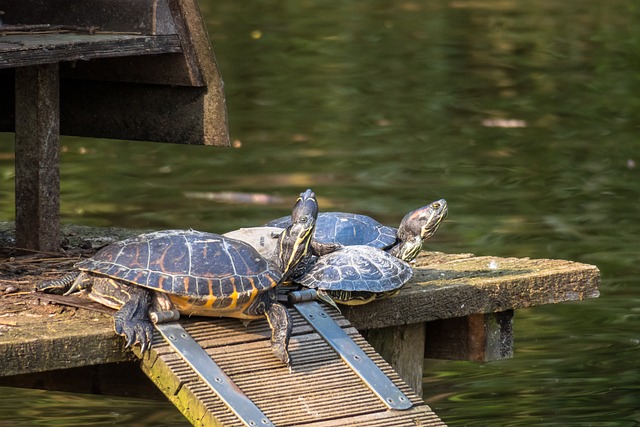Guide to Tortoise Species Identification: How to Distinguish Between Different Tortoise Species

Introduction: The Fascinating World of Tortoises and the Importance of Species Identification
Welcome to the fascinating world of tortoises, where these ancient creatures have captivated our imagination for centuries. From their slow and steady movements to their unique shells, tortoises are truly remarkable creatures that have evolved and adapted over millions of years.
One crucial aspect of understanding and conserving tortoise populations is species identification. With over 50 recognized species worldwide, each with its own distinct characteristics and habitat requirements, accurately identifying tortoise species is vital for conservation efforts.
Species identification allows researchers, conservationists, and wildlife enthusiasts to gather valuable data on population sizes, distribution patterns, and genetic diversity. This information helps in developing effective conservation strategies to protect endangered species and preserve their natural habitats.
Advancements in technology have made the process of tortoise species identification more accessible than ever before. DNA analysis techniques can now provide accurate results within a short period, allowing scientists to differentiate between closely related species that may appear similar at first glance.
In this section, we will explore the various methods used for tortoise species identification. We will delve into the importance of accurate identification in conservation efforts and highlight some notable success stories where proper species identification has played a crucial role in protecting these remarkable creatures from extinction.
Join us as we embark on this journey into the intricate world of tortoises and discover why species identification is key to their survival.
Must Read : Hatchling Sulcata Tortoise Care: Your Guide to Raising Happy and Healthy Baby Tortoises
Physical Characteristics and Shell Patterns: Key Factors in Identifying Tortoise Species
When it comes to identifying different tortoise species, physical characteristics and shell patterns play a crucial role. These key factors provide valuable insights into the unique traits and distinctions of each species, enabling researchers, conservationists, and enthusiasts to accurately identify and classify them.
Physical characteristics such as body size, shape, coloration, and facial features are essential in distinguishing one tortoise species from another. For instance, the shape of the carapace (the top part of the shell) can vary significantly between different species. Some may have a domed shape for protection against predators, while others may have a flatter or more elongated carapace for better maneuverability in their natural habitats.
Shell patterns are another vital aspect in identifying tortoise species. The intricate markings on the carapace can be unique to each individual and serve as a distinctive characteristic for identification purposes. These patterns can include specific arrangements of lines, spots, or even geometric shapes that differ between species.
By carefully studying these physical characteristics and shell patterns through detailed observation or using advanced imaging techniques like photography or 3D scanning technology, experts can accurately determine the specific tortoise species they are dealing with.
Accurate identification of tortoise species is not only important for scientific research but also plays a crucial role in conservation efforts. Understanding which species exist in certain regions helps conservationists develop targeted strategies to protect their habitats and ensure their survival.
In conclusion, physical characteristics and shell patterns are key factors that enable accurate identification of different tortoise species. By paying attention to these distinguishing features during research or fieldwork activities, scientists and enthusiasts alike can contribute significantly to our understanding of these fascinating creatures while aiding in their conservation efforts.

Habitat and Geographic Range: Understanding the Distribution of Tortoise Species
Understanding the habitat and geographic range of tortoise species is crucial for their conservation and management. By studying their distribution patterns, scientists and researchers can gain valuable insights into the ecology and behavior of these fascinating creatures.
Identifying different tortoise species is a fundamental step in this process. With numerous species existing across various regions, accurate identification becomes essential for effective research and conservation efforts. This involves examining physical characteristics, such as shell shape, size, coloration, and other distinguishing features.
Once identified, researchers can then delve into understanding the specific habitats that these tortoises occupy. Each species has unique preferences when it comes to environmental conditions like temperature, humidity levels, vegetation type, and availability of food sources. By mapping out their geographic range based on these factors, we can gain a comprehensive understanding of where each species thrives.
This knowledge allows us to implement targeted conservation strategies that protect both the individual tortoise populations and their habitats. It helps us identify areas that require special attention in terms of habitat preservation or restoration efforts.
Furthermore, understanding the distribution patterns of different tortoise species aids in monitoring population trends over time. By regularly surveying their habitats and documenting any changes in abundance or distribution range, we can assess the impact of environmental factors or human activities on these populations.
In summary, comprehending the habitat preferences and geographic ranges of various tortoise species is crucial for effective conservation measures. Accurate identification techniques combined with detailed mapping provide valuable insights into their ecology while guiding efforts to protect these remarkable creatures for generations to come.
Behavioral Traits and Diet Preferences: Clues for Narrowing Down Tortoise Species Identification
When it comes to identifying tortoise species, behavioral traits and diet preferences can provide valuable clues. By understanding these aspects, we can narrow down the possibilities and accurately identify the specific tortoise species.
Behavioral traits such as activity patterns, social interactions, and habitat preferences can vary greatly among different tortoise species. Some may be more active during certain times of the day or exhibit specific behaviors unique to their species. By observing these behaviors, we can gather important information that aids in identification.
Diet preferences also play a significant role in narrowing down tortoise species identification. Different species have distinct dietary requirements and preferences for specific types of vegetation. By analyzing the diet of a tortoise, we can further narrow down the potential species it belongs to.
By combining our knowledge of behavioral traits and diet preferences, we can effectively narrow down the options when it comes to identifying tortoise species. This not only helps researchers and enthusiasts accurately classify these fascinating creatures but also contributes to their conservation efforts by understanding their ecological needs more comprehensively.
Conclusion about Tortoise Species Identification
We have covered almost all the important points about how you will be identifying the species. Thank you for reading
What do you think?
Show comments / Leave a comment